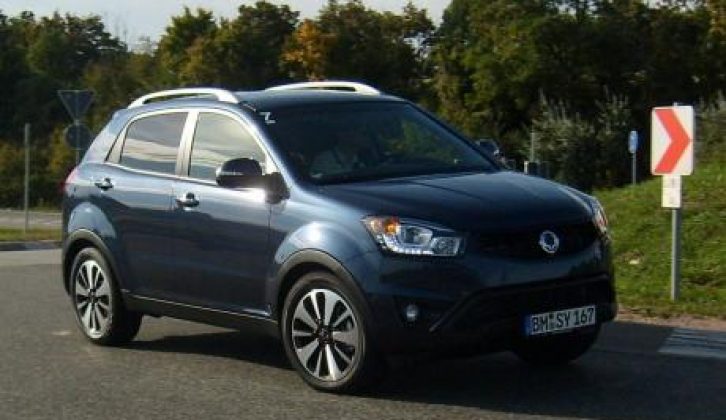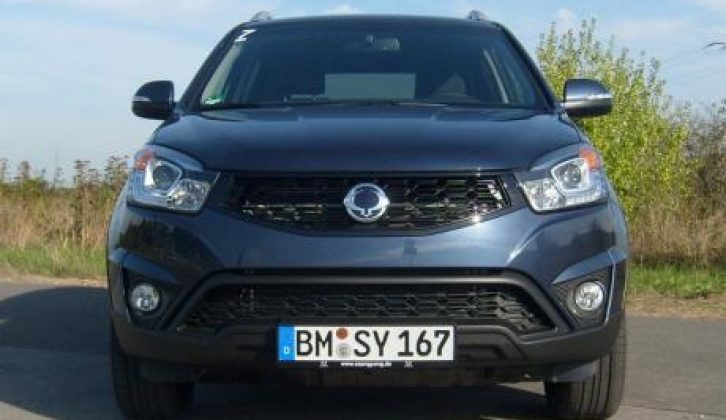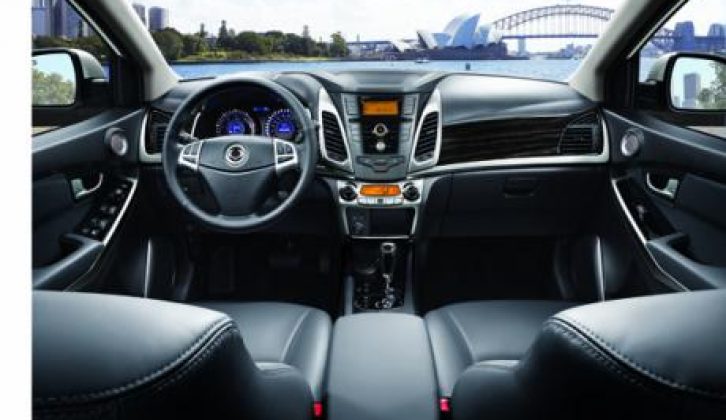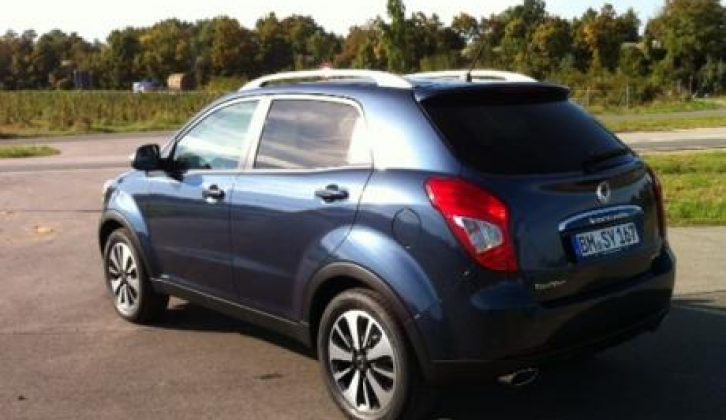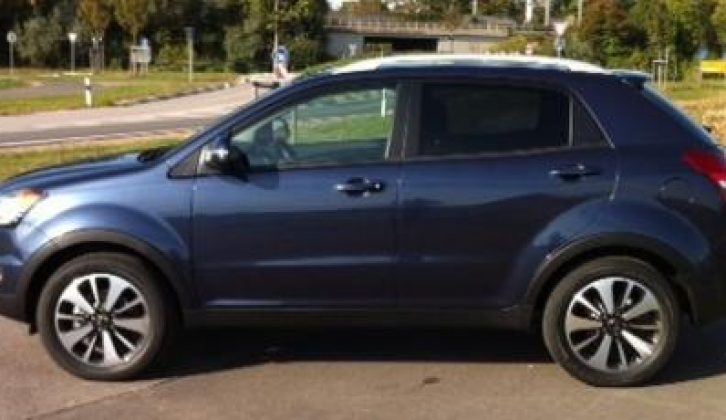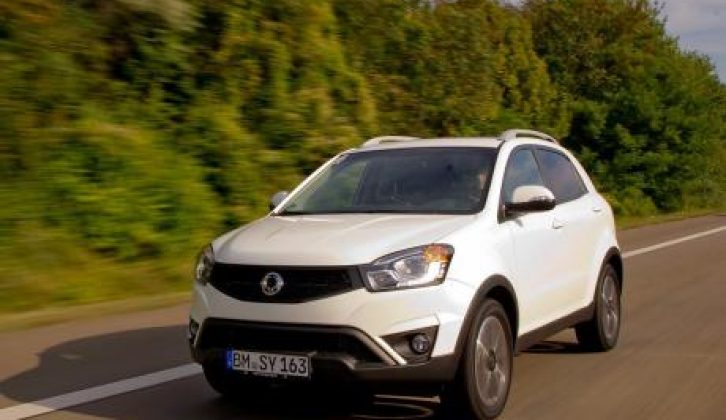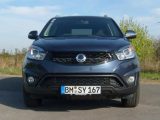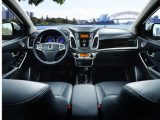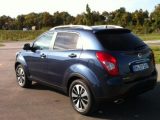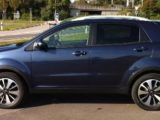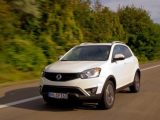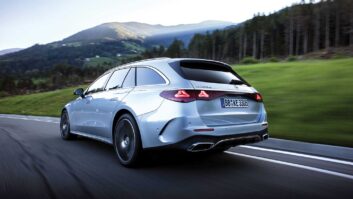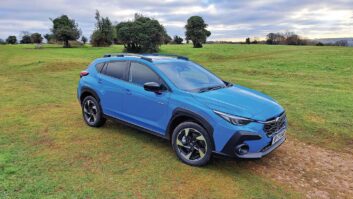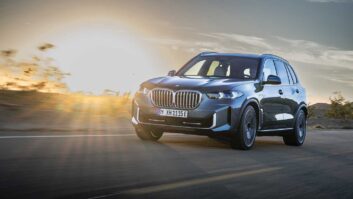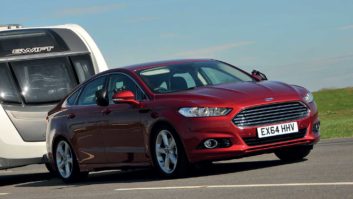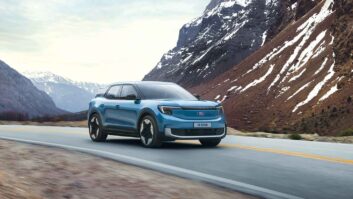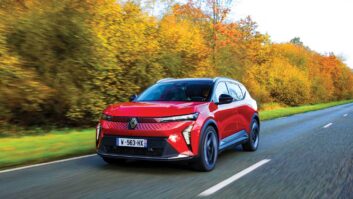[tl:gallery size=460×365]
[tl:gallery size=460×337]
New look, better finish
Facelifts can be rather half-hearted, with the odd styling
tweak to liven up an ageing design. Not with the Korando. A good looking car
(don’t forget, it was styled by the famous Italian design house, Giugiaro) has
been modernised with a more slender, black mesh grille and a more intricate
headlight design. Squint a bit and the new front end looks a bit like a beefed
up Renault Captur crossover, which is no bad thing in our book.
Inside, the old does-what-it-says-on-the-tin dashboard has
been replaced with a new, more appealing fascia. The standard of finish has improved,
with soft-touch plastics on top of the dashboard. It’s a shame they’re not on
the upper half of the doors, too, but perhaps that’s unreasonable to ask of
what is still a budget car. What’s more important is that ease of use hasn’t
been sacrificed for style, with large rotary dials, clearly labelled buttons
and a sensible layout.
[tl:gallery size=460×322]
Other changes are aimed at improving what the car
industry calls NVH (noise, vibration and harshness). With po-faced precision,
Ssangyong’s engineers claim a 9.3% improvement over the old car.
Human senses struggle to be so exact, but suffice to say the
revised car is definitely quieter at speed. That’s certainly the
case when driving cars with the lower powered version of the e-XDi200 diesel
engine. New engine mountings and reinforced sub-frames mean less noise and
vibration are felt inside the cabin. Even when accelerating hard the engine
sounds more distant than before.
[tl:gallery size=460×307]
Less is more
There’s a surprisingly big difference between the 147bhp and
the 173bhp versions. Despite being essentially the same engine in different
states of tune, the high-powered diesel is obviously noisier from the moment
you twist the key. There’s more diesel clatter, and a grumpy mumbling that
never disappears even when cruising on the motorway.
In contrast, the less powerful engine keeps itself to itself
once up to cruising speeds. It’s still a little gruff when your press hard on
the accelerator but it sounds far more distant than the 173bhp version.
You might think that the less powerful engine would compromise performance, but in fact both post identical 0-62mph times of 9.9 seconds.
In part that’s because the 147bhp version is only available with a six-speed manual
gearbox, whereas in the UK the 173bhp cars will all be six-speed autos.
The manual feels a bit clunky, but unless you really must
have an automatic we prefer it. The auto takes an age to change gears if you
use the manual override, and it can hunt up and down between ratios.
For towing duties, there’s no compromise in choosing the
less powerful car, which will be sold in two- and four-wheel-drive versions. Ssangyong
quotes identical kerbweights for both (1591kg to 1645kg for the 2WD and 1672kg to 1727kg for the 4WD,
depending on the level of equipment). The 2000kg towing limit is also
the same.
Peak torque (the mid-range muscle which really counts when
towing) is 266lb ft for both engines, and it arrives at lower revs in the lower
powered model, which is also more economical (48.7mpg on the combined cycle
for the two-wheel drive).
[tl:gallery size=460×230]
Lots of car for the money
While some of the old Korando’s weaknesses have been addressed, its
strengths have been preserved. As before, there’s more legroom in the back than
you’ll find in a Hyundai ix35 or Kia Sportage, and the boot is a healthy 486
litres with the seats upright. Folding the seats down provides a near-flat load
floor and up to 1312 litres of space.
Pricing continues to be keen. The range starts from £14,995
for the 2.0 SE. The cheapest four-wheel-drive is the 2.0 SE4 at £16,495, while
the higher-spec 2.0 ELX4 will cost £19,995. The ELX4 auto with the
higher-powered engine costs £21,495.
The Korando still leans heavily if you corner hard, and the
self-centring on the steering remains too strong. But those criticisms won’t
worry caravanners looking for a robust, powerful and keenly priced tow car.
That wider recognition may finally be on the way.
[tl:gallery size=460×327]
